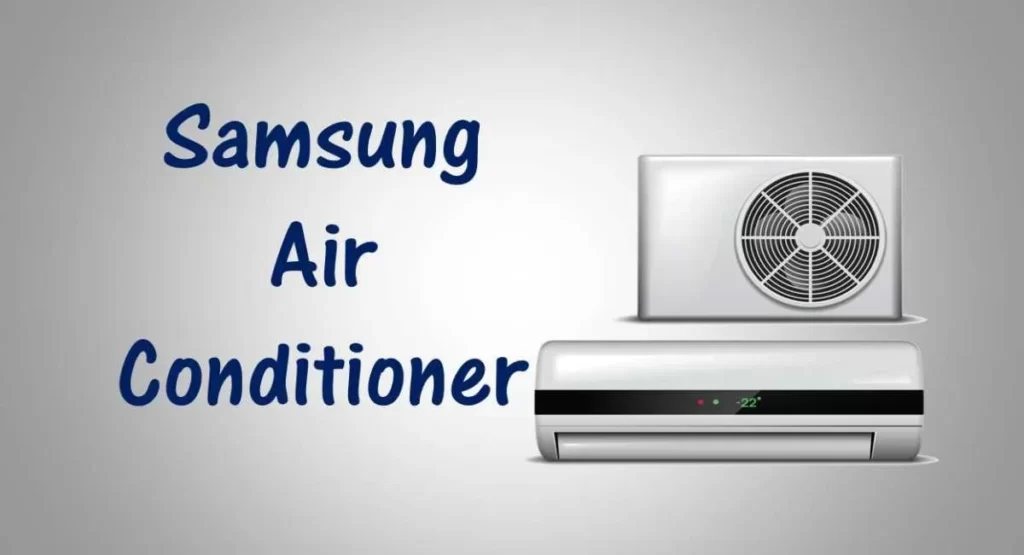
Samsung Air Conditioners Advantages which gives customer happy : DUAL Inverter Compressor, Super Convertible 5-in-1 Cooling, HD Filter with Anti-Virus Protection, UV Nano, Ocean Black Fin, PM 1.0 Smart Sensor, 4 Way Swing, Ocean Black Protection, Stabilizer Free Plus and ThinQ. Choose best support from our Prime Support Samsung AC Service Hyderabad, Call our Samsung AC Customer care Hyderabad 7337449976 for same day service.
Common solutions for: Samsung AC not cooling
- If the air filter is clogged, air cannot flow properly through the air conditioner. This greatly reduces the cooling capacity of the air conditioner. In addition, if the air filter is clogged, the evaporator coils will frost over. To remove debris from the air filter, try cleaning the filter. If it is not possible to clean the air filter, replace it.
- The condenser coils dissipate the heat as the refrigerant passes through the coils. If the condenser coils are dirty, they won’t be able to dissipate the heat as effectively. As debris builds up on the coils, the air conditioner will become less efficient, causing the air conditioner to work harder to cool down. If the coils are significantly dirty, the air conditioner will not be able to maintain the proper temperature, and the compressor will run continuously in an attempt to cool the room. Check the condenser coils to determine if they are dirty. If the condenser coils are dirty, clean them.
- The compressor might be defective. However, this is not usually the case. Before replacing the compressor, be sure to check more commonly defective components—particularly the overload protector and the compressor capacitor. If the compressor is defective, it should only be replaced by a licensed technician.
- The thermostat monitors the temperature of the air. When the air temperature rises above a set point, the thermostat activates a switch to provide power to the fan and compressor. If the thermostat is defective, the thermostat may not cool properly. To determine if the thermostat is defective, set the air conditioner to cooling and then use a multimeter to test the thermostat for continuity. If the thermostat does not have continuity while the air conditioner is set to cooling, replace the thermostat.
- The control board regulates the voltage to the compressor and the fan motor. If the control board fails, some components will not function properly or will not work at all. Control boards are often misdiagnosed; make sure to check more commonly defective parts first before replacing the control board.
- The main control board regulates the voltage to the compressor and the fan motor. If the main control board fails, some components will not function properly or will not work at all. Main control boards are often misdiagnosed; make sure to check more commonly defective parts first before replacing the main control board.
- If the temperature control board is defective, the fan motor and compressor will not get power. Control boards are often misdiagnosed; make sure you check other air conditioner parts before replacing the temperature control board. If you are certain that all of the other components are working properly, replace the control board.
- The temperature control thermostat is a sensor which monitors the temperature of the air and activates a switch to provide power to the fan and compressor when the air temperature drops below a set point. If the thermostat isn’t working, the air conditioner will cool continuously or won’t cool at all. To determine if the temperature control thermostat is defective, use a multimeter to test it for continuity. If the thermostat does not have continuity, replace it.
- The thermistor is a sensor connected to the control board that detects the temperature of the air. The resistance value of the thermistor changes in conjunction with the air temperature. If the air temperature rises, the resistance value will decrease. To determine if the thermistor is at fault, use a multimeter to test it for continuity. If the thermistor does not have continuity, or if the resistance of the thermistor does not change with a change in temperature, replace the thermistor.
- The run capacitor is connected to the compressor with electrical leads. If the run capacitor burns out, the compressor will not run. To determine if the run capacitor is burned out, test the capacitor using a multimeter. If the capacitor does not have continuity, replace it.

